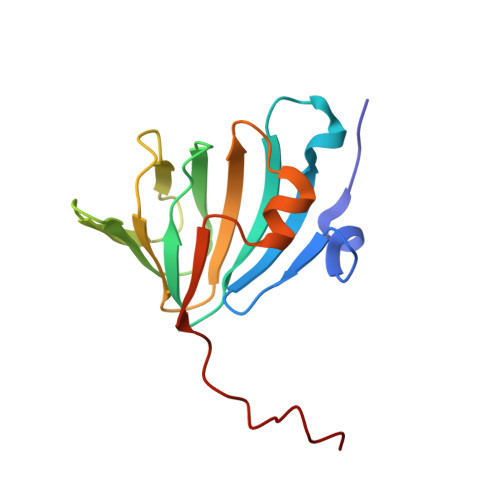Illuminating the catalytic core of ectoine synthase through structural and biochemical analysis.
Czech, L., Hoppner, A., Kobus, S., Seubert, A., Riclea, R., Dickschat, J.S., Heider, J., Smits, S.H.J., Bremer, E.(2019) Sci Rep 9: 364-364
- PubMed: 30674920
- DOI: https://doi.org/10.1038/s41598-018-36247-w
- Primary Citation of Related Structures:
5ONM, 5ONN, 5ONO - PubMed Abstract:
Ectoine synthase (EctC) is the signature enzyme for the production of ectoine, a compatible solute and chemical chaperone widely synthesized by bacteria as a cellular defense against the detrimental effects of osmotic stress. EctC catalyzes the last step in ectoine synthesis through cyclo-condensation of the EctA-formed substrate N-gamma-acetyl-L-2,4-diaminobutyric acid via a water elimination reaction. We have biochemically and structurally characterized the EctC enzyme from the thermo-tolerant bacterium Paenibacillus lautus (Pl). EctC is a member of the cupin superfamily and forms dimers, both in solution and in crystals. We obtained high-resolution crystal structures of the (Pl)EctC protein in forms that contain (i) the catalytically important iron, (ii) iron and the substrate N-gamma-acetyl-L-2,4-diaminobutyric acid, and (iii) iron and the enzyme reaction product ectoine. These crystal structures lay the framework for a proposal for the EctC-mediated water-elimination reaction mechanism. Residues involved in coordinating the metal, the substrate, or the product within the active site of ectoine synthase are highly conserved among a large group of EctC-type proteins. Collectively, the biochemical, mutational, and structural data reported here yielded detailed insight into the structure-function relationship of the (Pl)EctC enzyme and are relevant for a deeper understanding of the ectoine synthase family as a whole.
- Department of Biology, Laboratory for Microbiology, Philipps-University Marburg, D-35043, Marburg, Germany.
Organizational Affiliation:


















